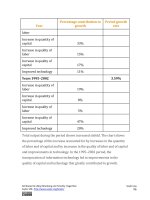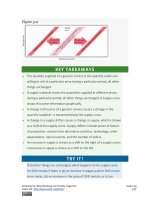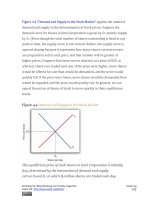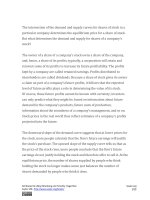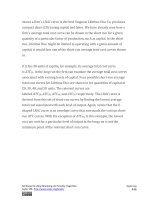Authors libby rittenberg 856
Bạn đang xem bản rút gọn của tài liệu. Xem và tải ngay bản đầy đủ của tài liệu tại đây (411.52 KB, 1 trang )
LEARNING OBJECTIVES
1. Define joint ventures and explain the evolution of U.S. antitrust policy
towards them.
2. Discuss other antitrust policy changes that relate to U.S. firms
competing with foreign firms.
In the early 1980s, U.S. imports from foreign firms rose faster than U.S.
exports. In 1986 the trade deficit reached a record level at that time.
Antitrust laws played a relatively minor role in increasing the deficit, but
business interests and politicians pressed for the relaxation of antitrust
policy in order to make U.S. firms more competitive against multinational
companies headquartered in other countries.
Antitrust enforcement was altered in the late 1980s so that horizontally
competitive U.S. firms could cooperate in research and development (R&D)
ventures aimed at innovation, cost-cutting technological advances, and
new product development. In an antitrust context, joint venturesrefer to
cooperative arrangements between two or more firms that otherwise
would violate antitrust laws. Proponents of the change argued that foreign
multinational firms were not subject to stringent antitrust restrictions and
therefore had a competitive advantage over U.S. firms. The International
Competition Policy Advisory Committee (ICPAC) was formed in the
Department of Justice in 1997 in recognition of the dramatic increases in
both international commerce and international anticompetitive activity.
Composed of a panel of business, industrial relations, academic, economic,
and legal experts, ICPAC is to provide advice and information to the
department on international antitrust issues such as transnational cartels
and international anticompetitive business practices.
Attributed to Libby Rittenberg and Timothy Tregarthen
Saylor URL: />
Saylor.org
856
